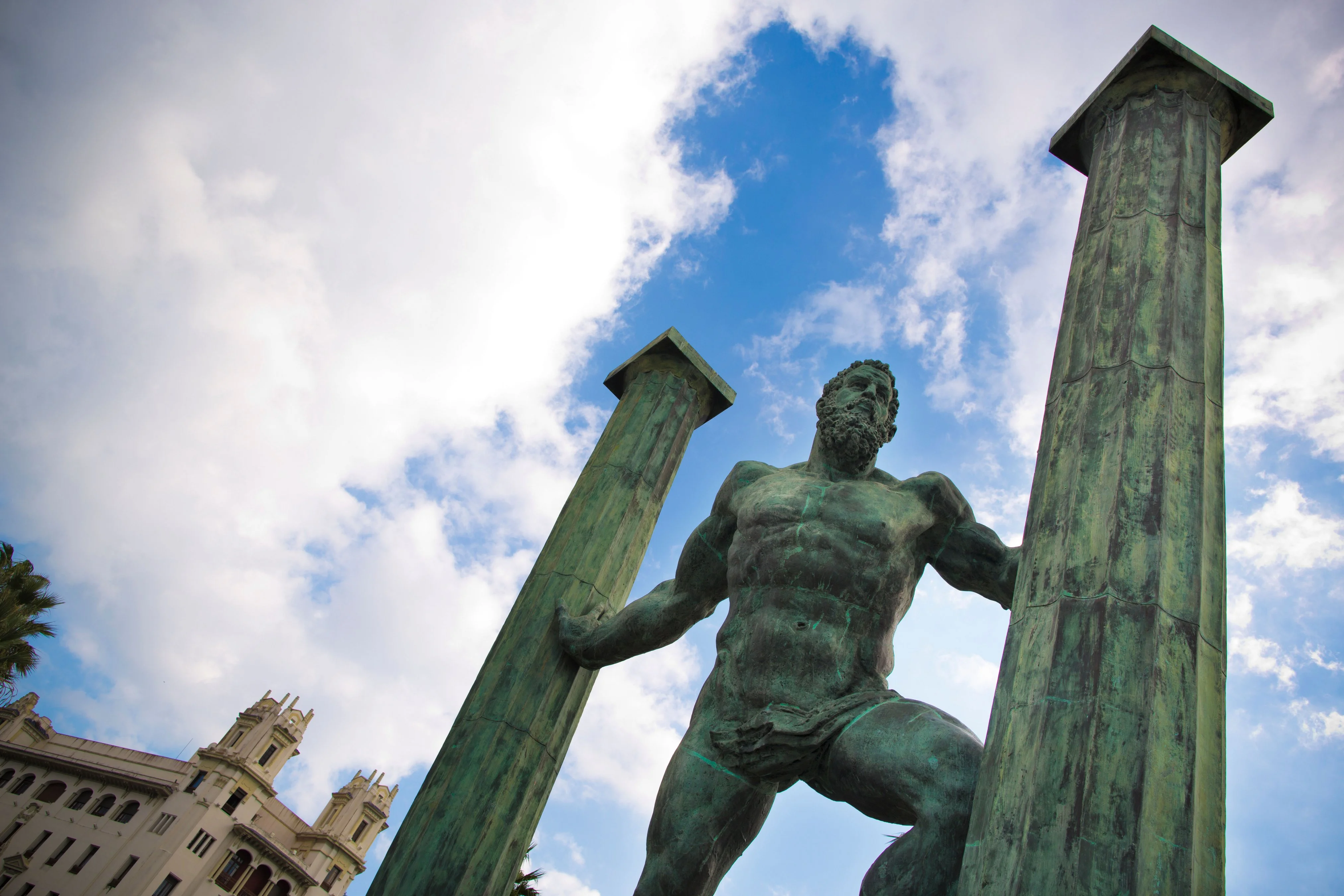The Pillars of Hercules: Myth or Reality?
The story of the most mysterious columns in world history

The Pillars of Hercules. Port of Ceuta. Spain/Alamy
Where were they located? What were they made of? Which country's coat of arms do they now decorate?
No one can dispute that mountains dramatically frame the entrance to the Strait of Gibraltar. On the European side stands the Rock of Gibraltar and on the African side, Gibraltar is guarded by two closely positioned mountains—Jebel Musa and Abyla.
The myth, however, tells of these mountains being raised by the great Greek hero Heracles to mark the boundary of the inhabited world. The Romans pronounced his name ‘Hercules’, coining the name ‘the Pillars of Hercules’. In some versions of the myth, Hercules is even credited with creating the Gibraltar Strait itself. He is said to have removed the mountains obstructing the Mediterranean Sea, thus opening the passage to the ocean. This is how Seneca1
Having reached, as commanded by the scorching sun,
The scorched lands in the middle belt,
He split the mountains in two, pierced through the barrier,
And opened a free path to the waters of the ocean.
It seems as though the Greeks borrowed this myth from the Phoenicians, who referred to these rocks as the Pillars of Melqart, who was a Phoenician god, the patron of sailors. He was highly revered by this merchant nation, and they built temples and monuments to him, often portraying him as a bearded man riding a horse with a fish's tail. Later on, the Greeks clearly associated Hercules with Melqart, a connection that seems inevitable, considering that he was credited with creating the Pillars of Hercules.

The Peutinger map. Fragment where the Pillars of Hercules are marked. Manuscript from the early 13th century/Alamy
While describing the temple of Melqart in Phoenician Tyre in Lebanon, both Strabo2

"I sailed to Phoenician Tyre, having heard of the sanctuary of Hercules. There, I witnessed this sanctuary adorned with opulent dedicatory offerings. Among these offerings were two columns, one made of pure gold and the other of emerald, radiantly gleaming at night."i
The golden column was meant to symbolize Africa, while the emerald one represented Europe. Even if one column was gilded and the other coated with molten green glass, the spectacle, one would assume, was awe-inspiring. The many foreign guests in Tyre undoubtedly spread the myth of the Pillars of Hercules, which were nothing more than precious columns of immense height standing at the edge of continents, shining brightly to guide ships. Their fame spread far and wide, and even Plato,4
Despite numerous subsequent travelers realizing that these pillars were merely mountains devoid of masses of emeralds or tons of gold, the legend persisted. Over time, it transformed into an equally mythical tale suggesting that the columns standing on the mountains had actually been erected by someone, perhaps not from precious materials but from ordinary stone. However, in the early eighth century, the Arab military commander Tariq ibn Ziyad ordered them destroyed.

Hercules carries the two columns. Limoges enamel. 16th century/Wikimedia Commons
Tariq ibn Ziyad, the conqueror of the Iberian Peninsula, had indeed aggressively expanded his territories around the strait, which, by the way, still carries his name (Gibraltar is a distortion of ‘Jabal al-Tariq’ or ‘the Mountain of Tariq’). However, there are no reliable sources about his conflict with the columns and no credible accounts confirming the actual existence of any columns on the mountains of Gibraltar.
Nevertheless, these two mythical columns proudly embellish the coat of arms of Spain even today, having been incorporated from the personal emblem of Emperor Charles V.5



